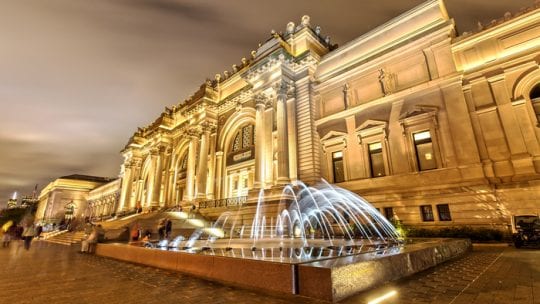
Its brand is so strong it can be conveyed with just one portion of one word in its name: The Met.
COVID-19 and a rapid succession of political, economic and racial crises presented an unprecedented challenge to an unrivaled American cultural institution. One of its most valuable assets was particularly under threat: its people.
With more than 1,600 employees, the museum has some of the top talent in the art world. One of the questions that loomed large for The Met, and all museums, was how to protect staff from financial duress–with their galleries closed for many months.
The team also had to try and fulfill its mission through digital channels. Much easier said than done at a venue that depends on engaging directly with works of art and hosting more than 25,000 in-person visitors daily. And, prior to COVID-19, The Met never held a virtual staff meeting.
When its doors closed, the museum did more than hold regular online exchanges between staff and leadership. Engagement being central to the mission, it worked to perfect the optimal size and structure for virtual events.
To protect staff and visitors, when the museum reopened, in August 2020, it was with a small group of essential employees. Additional staffers were invited to visit new exhibitions on special days. Those experiential opportunities helped sustain a sense of connection to the collection and build community.
One notable best practice was The Met’s continual surveying of employees. Many companies conduct occasional check-ins. The Met makes a concerted effort to get fast, frequent feedback. We’ve discussed in previous columns the importance of risk indicators. Those are equally essential for tracking internal issues.
Institutions like The Met will be even more important after the pandemic, according to Keith Weine, its Chief Communication Officer.
“This moment that we are in is precisely why museums can, and should, exist in our culture,” he told me recently. “That is, to be a place for people to come and find enlightenment by seeing art…and to experience it together.”
He also acknowledged The Met must, and will, assume an even larger role in supporting smaller cultural institutions and educating the public about the vital role museums can play in healing a post-pandemic world.
Achieving that even more ambitious mission will require a very strong team. Thanks to innovative internal communication programs and processes put in place over the past year, it is a role The Met will be well-positioned to play.
-Brett Bruen
Brett Bruen teaches crisis at Georgetown University and served as President Obama’s director of global engagement. He is president of the Global Situation Room
